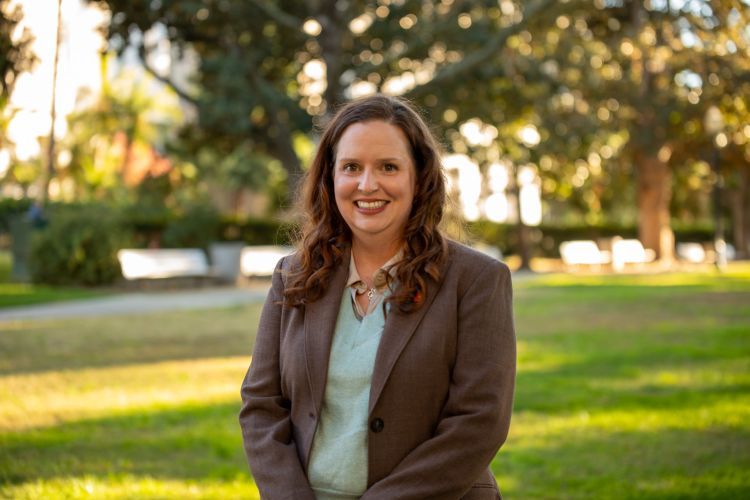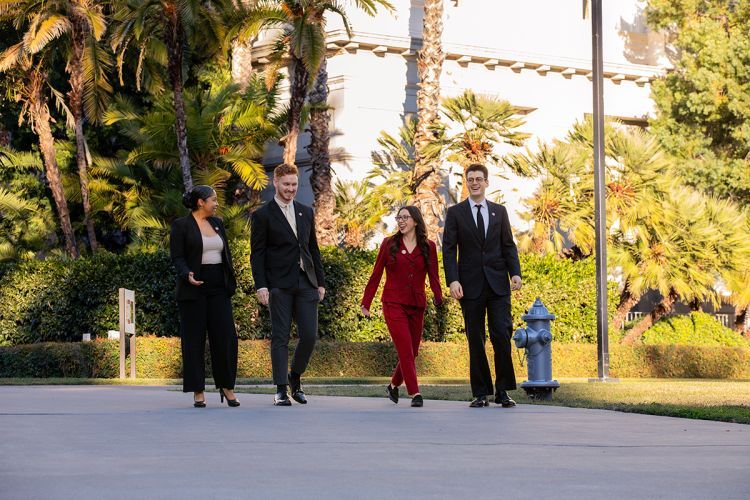Breadcrumb
Alumnus turns passion for being in court into career on the bench

Chief Judge Dana Sabraw spoke at the 2019 Commencement Ceremony for McGeorge School of Law.
When United States District Court Judge Dana Sabraw, ’85, graduated from McGeorge School of Law, he had no plans to emulate his three jurist relatives and become a judge. However, after 28 years of sitting on the bench, Sabraw wouldn’t have it any other way. He is currently the Chief Judge of the U.S. District Court for the Southern District of California and has previously held positions as a municipal court and superior court judge.
As a student, Sabraw chose McGeorge because he had heard good things about it while growing up.
“[McGeorge] had an excellent reputation for preparing students to practice law, and for bar passage specifically in California, which was very appealing,” Sabraw said. The first-year core curriculum as well as the reputation for clinics and externships with federal judges also stood out to him.
Sabraw is the fourth judge in his family, so he was exposed to the bench at a very early age, but it was his experience with litigation and being in court that led him to seek a judgeship. He spent about 10 years in private practice, where he was able to transition between different disciplines at Baker McKenzie. Their system of having lawyers rotate through various practice groups helped him realize that his passion was for litigation and trial work.
He stated that these experiences gave him a deep appreciation for the legal system and the effort to administer justice. The opportunity to advance justice was the draw, and “the combination of serendipity, hard work, and keen interest in the administration of justice” allowed him to achieve that goal.
Sabraw was only 37 years old when he was first appointed to the bench, and, though he knew that his “income would plummet,” it didn’t matter because he knew that sitting on the bench would be so satisfying. His initial focus as a judge was to just “do good, render justice,” he said. He tried dozens of municipal cases, and he truly enjoyed, “creating a courtroom atmosphere that was serious, yet one where lawyers felt comfortable, and people felt heard.”
By the time he was 39 years old, Sabraw was the presiding judge of a small bench of 11 municipal court judges. He explained that he applied to be a superior court judge as part of his effort to keep “chasing that sense of satisfaction and administering justice at the highest levels,” and was rewarded by being the last judge in San Diego County to be elevated from municipal to superior court before the trial courts were unified by California legislation.
As a Superior Court judge, he heard many felony jury trials, and for two years managed a civil docket with more than 700 cases, giving him “great experience at handling significant criminal and civil cases and trying more than 200 cases to jury verdict.” In 2003, he was appointed by President George W. Bush in 2003. He attributes his elevation to the federal bench to “openings that occurred at the right time and hard work that paid off.”
Sabraw believes that his time on the federal bench has been “the capstone of [his] career,” allowing him to oversee cases involving significant constitutional matters and to do so free from political interference or pressure as a life-tenured judge.
As Chief Judge, his goal is to manage the court in a way that serves the community at the highest level with access to all. During the pandemic, his court never closed. The court was able to handle its docket during that time because of its electronic case filing capabilities, remote work for law clerks, and other technological advances to continue to process civil cases in a timely way. The court conducted all proceedings except for trials virtually and coordinated with detention facilities and U.S. Marshals to do arraignments, bail hearings, changes of plea, sentencings, and supervised release hearings virtually.
The court used the entire courtroom as a deliberation room to ensure that juries could deliberate in-person in a safe way, and as a result of the efforts, effective communication, and the commitment of all of the judges and other court employees, the court succeeded in trying roughly 80% as many jury trials during the pandemic as it tried pre-pandemic and currently does not have any backlog from the pandemic.
Sabraw’s advice for prospective law students and judges is to have short and long-term goals and to, “make themselves as indispensable as possible in their present jobs.” Additionally, they should stay active in the community and serve it as best they can, noting that lawyers should always be present and engaged in whatever they’re doing at the time, to “be where you are,” he says.
This advice is reflected in the clerks he hires, a list that will include third-year law student Sierra Horton, who will clerk for Sabraw in 2024. Horton currently serves as the editor-in-chief of the University of the Pacific Law Review.
Sabraw's journey was a combination of serendipity, hard work, and a keen interest in the institution of the court, and his zest for the role of Chief Judge shines through in his work. Sabraw reports that one of the “great joys of serving as chief judge is to serve as the Court’s ambassador to the community it serves.”
For more information about McGeorge School of Law, visit our website.
Media Contacts:
- Ashley Golledge, Director of Marketing and Communications, agolledge@pacific.edu, 916.325.4687
- Victoria Ambriz, Marketing Coordinator, vambriz@pacific.edu, 916.325.4631
- Alex Banks, Communications Coordinator, abanks@pacific.edu, 916.520.7479





